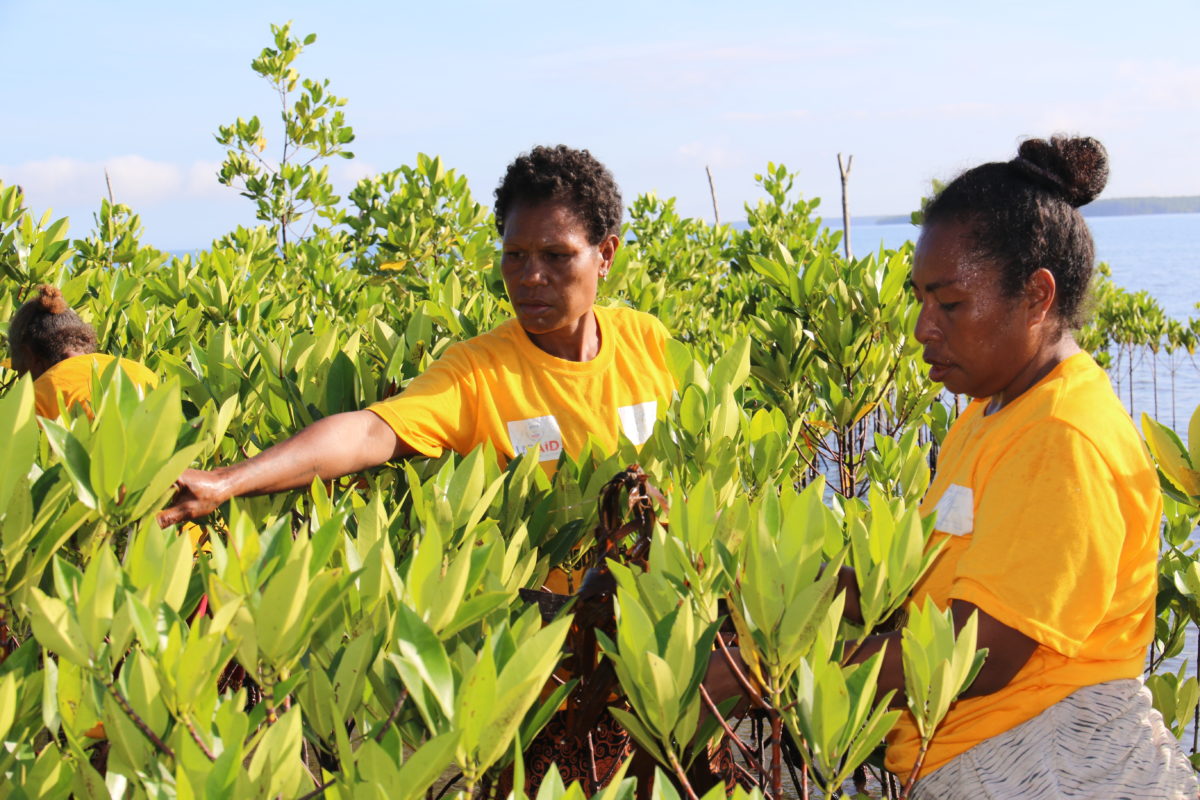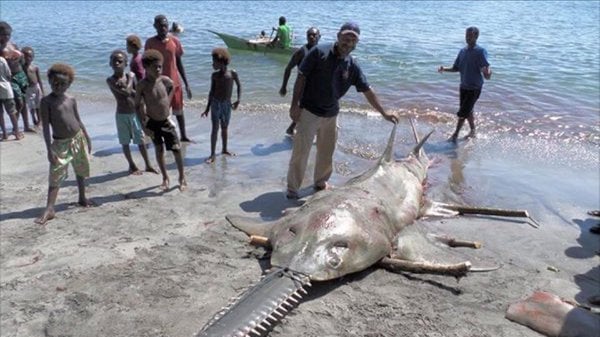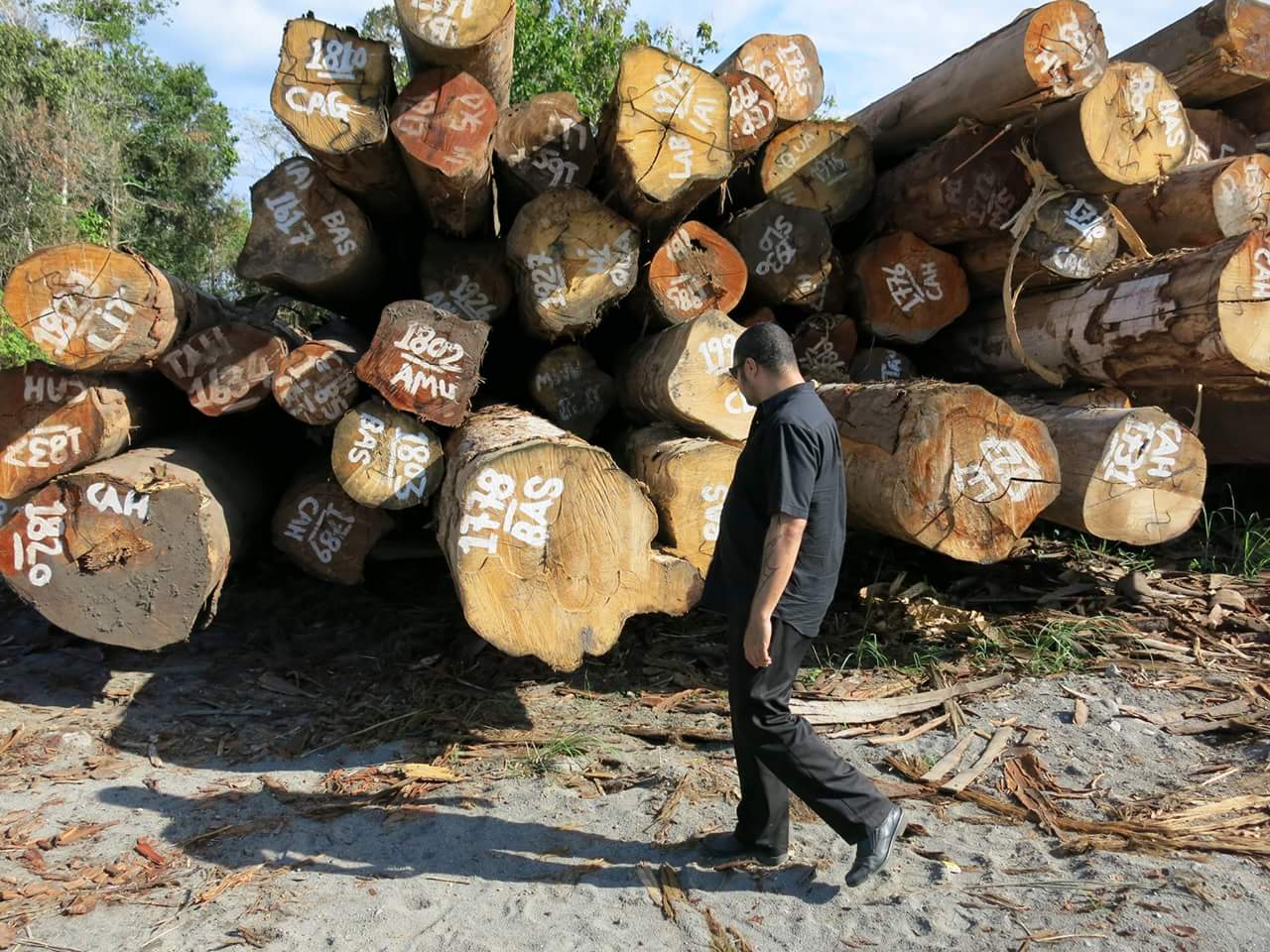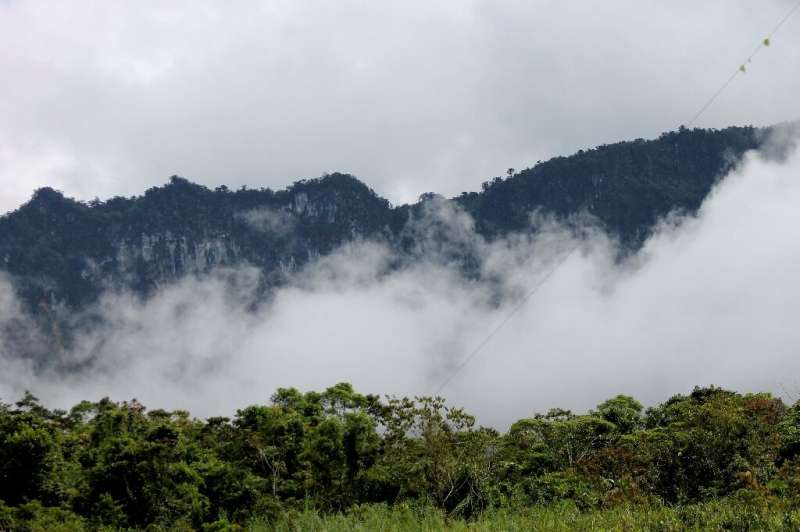A remote community in Papua New Guinea has embarked on a mangrove-replanting program to replace the degraded parts of their mangrove environment.
The remote coastal community of Poukama in the Kairuku Hiri District of Central Province in Papua New Guinea have taken upon themselves to champion a mangrove rehabilitation program using their available resources and importantly the existing traditional way of life to protect their biodiversity.
The Poukama village is situated within the Hallsound Bay of Kairuku Hiri District in the Central Province of Papua New Guinea. What makes it more interesting is that a research carried out by a local NGO, Papua New Guinea Center for Locally Managed Areas Inc. (PNGCLMA) with the support of USAID through the ‘Scaling up Women’s Participation in Mangrove Management’ between September 2017 to February 2019 made a major discovery.
Through the project, PNGCLMA engaged Dr Lawong Balun from the University of Papua New Guinea to do a biological survey and the survey found that the Hallsound Bay mangrove area, which covers 37, 407.49 hectares is the home to 72 mangrove species. This according to PNGCLMA makes it the largest and most diverse mangrove forest in Papua New Guinea.
The Executive Director of PNGCLMA, Maxine Anjiga says her Organization works through the Locally Managed Marine Areas approach, which means local people taking the lead in managing their marine resources in partnership with other agencies, NGO, either business or government from any level.
“Communities use traditional know how to manage resources but then they need science to confirm certain assumptions, thus we engaged Dr. Lawong Balun, from the University of PNG to do a study to determine the health of the mangrove ecosystem,” Ms Anjiga said.
With this information in hand, the women of Poukama with the support from their village Chief and community at large embarked on a significant drive to ensure they continue to preserve this important resource. The United Nations under its Environment Program points out that, “Although mangroves make up less than one percent of all tropical forests worldwide, they are highly valuable ecosystems, providing an array of essential goods and services, which contribute significantly to the livelihoods, well-being and security of coastal communities”.
The women have taken the lead in ensuring this project is sustainable, and that means using what is readily available to them and organizing themselves, thus the establishment of Women in Mangrove Management or in short WIMA.
Poukama WIMA vice chairlady and spokesperson, Marie Helen Mamei said prior to being introduced to the topic of environment and biodiversity conservation, they were engaged in what she views as unsustainable way of harvesting resources from their mangrove forest.
She said they would cut down mangroves unnecessarily without realizing that they were destroying their mangroves, but now that they are fully aware of this important resource, they are putting all their efforts into ensuring that they replace what they have cut down.
According to Marie the 25 member women group had met and agreed to start up the mangrove replanting program. She said their program involves a half a day general clean up and planting of mangrove seedlings from their nursery once every fortnight.
Marie says money is not a motivation factor for them, she adds it is out of sheer interest and a desire to ensure they leave behind a healthy mangrove forest for their children to harvest resource from for their daily sustenance.
“We have PNGCLMA at our back who always supports us with training on how to look after our marine resources and environment, so we are proud to be part of this project. We don’t want this project to be left alone but as soon as the NGO leaves, we want to be able to sustain the project,” Marie said.
She is optimistic that the project is in safe hands, “we want to move on and continue this project as women. We just want to do this and support our community especially for our children and their children.”
“We started this project in 2014 and I am happy to say that since that time up till now we’ve planted over 3000 mangroves in our mangrove rehabilitation area,” Mamei said.
They plan to continue to plant mangroves into the future.
“We do this voluntarily with the help of our husbands and children. We want this to continue because we know that in the future it will benefit our children and the future to come,” Marie said.
She also says they are fully aware of the importance of biodiversity and conservation, something they knew little about few years back.
She said biodiversity and conservation is very important to them now.
“Before when we did not have this rehabilitation area there was not much fish, crabs and shells, but now with this project we see a lot of this marine lives living in the mangrove.”
Like Marie, the WIMA chairlady, Elizabeth Vagi acknowledges the importance of the mangrove forest to their daily sustenance. However, she is worried that young women in the community do not seem to take keen interest in their mangrove rehabilitation program and she is determined to change that. Sustainability of this Mangrove rehabilitation program is her major concern now.
“We have to continue planting so we need to encourage the younger generation, especially the girls to join us in this project. We won’t be here forever, so when our time is up they can be able to follow in our footsteps and continue with the project,” Vagi said.
However, future conservation aspirations for this seaside village of Central Province is under threat due to plans to build a wharf several meters away from the mangrove rehabilitation site for a proposed multi-million-kina Fishing project. This proposed project is part of the Central Provincial Government’s plan to drive the Provincial development agendas through the Agriculture sector. On May 11, 2020, local TV station EMTV in its online news page quoted the Governor, Robert Agarobe announcing that plans and discussionswere underway to invest in the Free trade zone concept for the Kairuku area. “The Free Trade Zone would allow for more investors to invest in agriculture in the area and this would create employment and drive the provincial economy,” Agarobe said this on EMTV news.
This is a big concern for the community and the Chairman of the Special Management area, Francis Raoma points out that they feel threatened that their project, which has taken so many years to reach its current state is in limbo.
Raoma said the Hallsound bay community do not support this project. The WIM Deputy Chairlady and spokesperson, Marie Helen Mamei is of the same view. She expressed concerns that there was little or no community engagement in really understanding the major development initiative proposed by their provincial government.
“We’ve worked for 6 years to plant these mangroves and if developments are introduced and it destroyed what we’ve worked hard for in just a day, it will not be good for us, it will hurt us and it will be a waste of the hard work we’ve put into this mangrove project,” she said.
She suggests that prior engagement and dialogue with resources owners and affected communities must be done if there are any plans for development in their area before the actual implementation of projects.
Raoma is skeptical of the provincial government’s moves.
“The MP and Governor are pushing for the project without proper consultation. They’ve been trying to get through paper landowners who are not recognized”, he added.
He said while they want some level of development those in authority and developers must consult with the local community before they can proceed with any impact project in their area.
Raoma said while they hear about the wharf project, they are yet to see any meaningful consultation with village elders and members of their community.
“We feel threatened and our environment is threatened what we’ve developed over a period of time can be destroyed in a very short period of time and we don’t what that. It is good that they come and sit down with us so that we discuss and analyze things to see that what they bring in is environment friendly.
The Provincial Government has remained tight lipped about the wharf project despite several attempts to get a response from the Governor’s office. What remains unclear at this stage also is whether they have engaged a developer and how much it will cost to develop the wharf project.
The head chief of Poukama Village, Peter Aisi during a recent interview acknowledged the work that women in his community have done, and continue to do.
He says the whole community has embraces the project.
“It was a struggle in the beginning but once the people understood the whole idea, they embraced it, even those who once opposed the project realized its importance and have now thrown their support behind it,” Chief Aisi said.
However, he points out that one significant achievement is that everyone regardless of gender was able to work together to make this project a success.
He did acknowledge that they still have a long way to go but they have made a positive start and he wants to see the project continue.
Chief Aisi acknowledges during his time and that of others in his age group they have made some decisions that have harmed their mangroves by harvesting it in an unsustainable manner, but he hopes that through this project they will be able to balance this by replanting their mangrove forest for the future generation.
“Our time is already up, we have to do what is right now in order to create an environment that our future generation can enjoy, besides we are only looking after this for the future generation,” he said.
This story was produced with support from Internews’ Earth Journalism Network (EJN).




